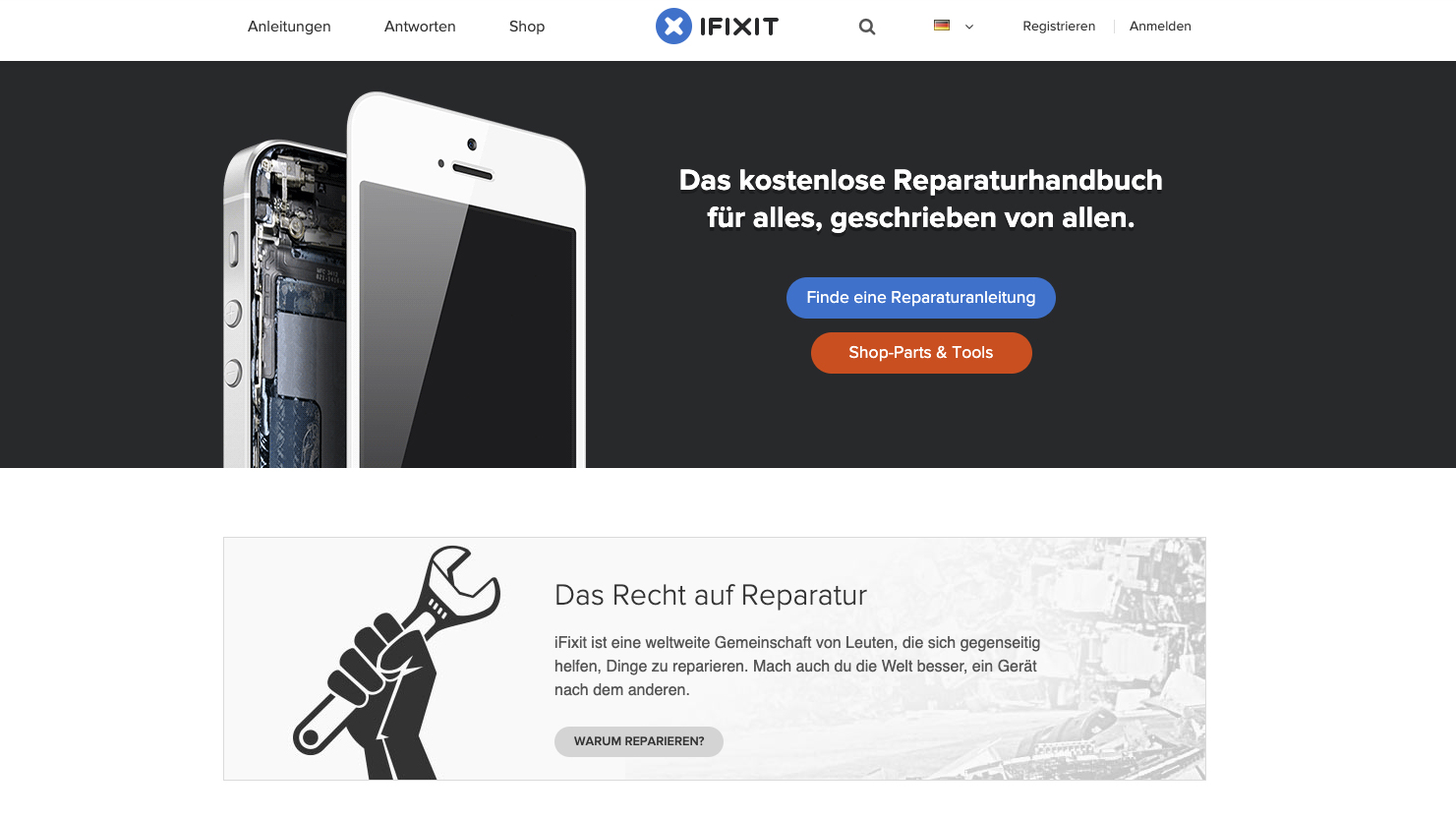If there is one thing the iFixit story proves, it’s the power of perseverance—or stubbornness. As we commemorated in our 20th (global) Anniversary post, “For all the change and the challenge, we’ve managed to stay remarkably ourselves.”
Stubbornness is Kyle and Luke fixing a broken iBook G3 without any repair manuals in their dorm room, using only harvested replacement parts. But it’s also Matthias Huisken and Matthias Mayer, who started iFixit Europe, pestering the aforementioned iFixit founders with emails enough times to get their attention, and ultimately their support, to establish a European subsidiary.
10 years ago this summer, iFixit had a proven track record of providing high-quality guides, parts, and tools, a lively online community, and was capturing the interest of tech geeks worldwide with in-depth teardowns. As supporters of the platform, Matthias Huisken and Matthias Mayer were convinced that the mission behind iFixit needed to go international.
iFixit Lands in Europe
While the world was dancing Gangnam Style, more than 1 billion smartphones were sold for the first time. iFixit tore down both the second gen MacBook Pro With Retina Display and the Playstation 4. And the “Matthias team” set up a small operation in Stuttgart, Germany. From the heart of Swabia, they started shipping tools, parts, and gummy bears to 28 European countries—providing access to repairs for more people than ever before.

The initial location in Stuttgart’s downtown area had some challenges, though. Every time a US shipment delivery arrived, it blocked busy inner city traffic—the loading area was just not large enough to accommodate the truck. Thankfully, for the first shipments, Kyle and Luke were there to help the tiny, five-person team unload and get started.
It’s fair to say that Europe proved more than ready for the repair revolution. iFixit was covered in a bunch of European media and people quickly took notice. After a few months, the small warehouse and office area had already became too small to handle the incoming interest from all over Europe.


Moving to Degerloch—and Across The Continent!
In 2014, iFixit Europe made the move to its current location in the Degerloch neighborhood, located 200 meters above the inner city on one of Stuttgart’s many so-called “Kessel” hills. The somewhat more remote location provided better logistics and office space. By 2017, the iFixit office had grown to 28 people, with 8 additional staff working across Europe.
What do these pre-pandemic remote employees do? Glad you asked! iFixit’s goal of helping everyone fix every thing makes it important to reach as many people as possible. With our expansion across the ocean, translation and international community-building became ever more important. We were thrilled to find dedicated translators to help bring our content to not only German, French, and Spanish audiences, but a grand total of 12 languages. That includes other official languages of the European Union such as Italian, Dutch, and Portuguese. Hard-working members of our community are making sure that our European forums are lively destinations for troubleshooting and enable the increasing number of fixes on this side of the ocean.
Changing Hearts and Minds
Meanwhile, the advocacy team spread the message instilled by our Repair Manifesto to lawmakers across Europe. We are involved in many European campaigns and organizations standing up for a more sustainable use of resources and electrical appliances, including the Right to Repair Europe coalition.
In 2015, we even went directly to the European Parliament to show members of parliament how to fix their phones. In an effort to research and develop ways to standardize measurement of repairability, we have contributed our expertise to several EU projects. As part of sustainablySMART, we developed a scientific basis for reparability scoring and implemented it in a webtool. Additional work on repairability rating methods and standards was done in the PROMPT project. For the CloseWEEE project, we worked on approaches to help disassembly line workers to safely and rapidly dismantle electronic devices. And while there’s still a ton of work to be done, we’ve seen encouraging progress in European legislation over the last couple of years.
We’ve also found some allies on the manufacturing side. German outdoor apparel manufacturer Vaude collaborated with us on guides for clothes, tents, and luggage. In the electronics world, we were excited to see Europe-based Fairphone grow from an idea into a real, sustainable business. Oh yeah, and did we mention that we work with HMD Global to bring repair to Nokia Phones?

Repairing in Person
All the while, iFixit Europe kept reaching out to the public—the folks that make any of this matter. We supported the Repair Café movement as it grew from a repair event in Amsterdam to a worldwide phenomenon. Our very own iFixit Europe team members volunteer at Repair Cafés from time to time—some were even Repair Café volunteers before joining iFixit.

We proudly show off iFixit’s work and vision at many events and fairs across Europe, like FixFest and Maker Faires. For three months in 2017, iFixit Europe even had a brick-and-mortar shop. As part of “Fluxus,” a temporary concept mall in Stuttgart, we encouraged people to try repairs in our own little pop-up repair shop. It was a great opportunity to experience people using iFixit’s resources in person.
It’s been a wild ride so far, but it’s encouraging to see that Europeans seem to have taken to the idea of repair—surveys from the last few years certainly say so. Still, a few hurdles exist to get repair truly mainstream. We’ll keep working on it with our particular approach towards determination. In the case of repair, “stubborn” is definitely a virtue.





0 Comments